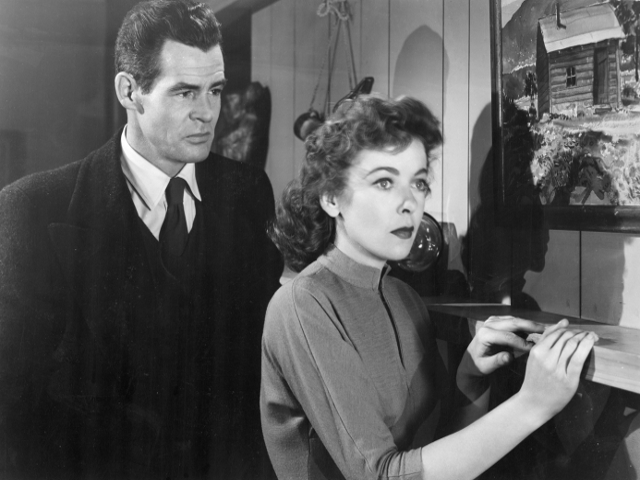Take Three: Ida Lupino
 Tuesday, June 5, 2012 at 9:15AM
Tuesday, June 5, 2012 at 9:15AM Craig (from Dark Eye Socket) here with Take Three. This week actress and director Ida Lupino
 Ida Lupino a "sensation" circa 1941
Ida Lupino a "sensation" circa 1941
Take One: The Bigamist (1953)
The Bigamist probes unseemly marital behaviour and stews on moral sorrows. At its centre is Edmond O’Brien toing and froing between two wives. But behind the camera as director, and in a supporting role as O’Brien’s second, San Francisco wife Phyllis Martin, is Ida Lupino. Her unfussy direction creates lean drama and her performance beautifully matches it, with nary an unnecessary furtive glance or superfluous line spoken. She’s a woman bored on a bus tour of Hollywood stars’ homes, chatted up by O’Brien’s depressed bigamist Harry Graham. 
Edmond as Harry: Haven’t you any interest in how the other half lives?
Ida as Phyllis: No, not particularly. I’m just crazy about bus rides – gives me a chance to get off my feet.”
Phyllis is smart, practical and wryly humorous. She’s world-weary enough to spot a chancer, but curious enough to give him his chance. Yet, she’s not someone to be taken advantage of. She’s part good-time gal, hired by a failing Chinese restaurant to perk up business that she herself acknowledges she’s failed to do, and part susceptible single girl. It’s clear she wants companionship, so she involves herself unknowingly in an already-married man’s emotions. Lupino deftly conveys just the right levels of guarded vulnerability and earthy pluckiness.
Lupino directed herself twice on screen prior to The Bigamist in Outrage (1950) and Hard, Fast and Beautiful (1951) – but only in unnamed, uncredited cameos. Here she creates for herself a memorable emotionally driven character which she nails with snap and skill. With the cheeky shrewdness of a Hollywood pro, the perfectly cast Lupino gives herself the film’s best part. As a director she clearly knows what kind of performance style the part requires; as an actress she fulfils the role with elegant yet slightly spiky precision.



